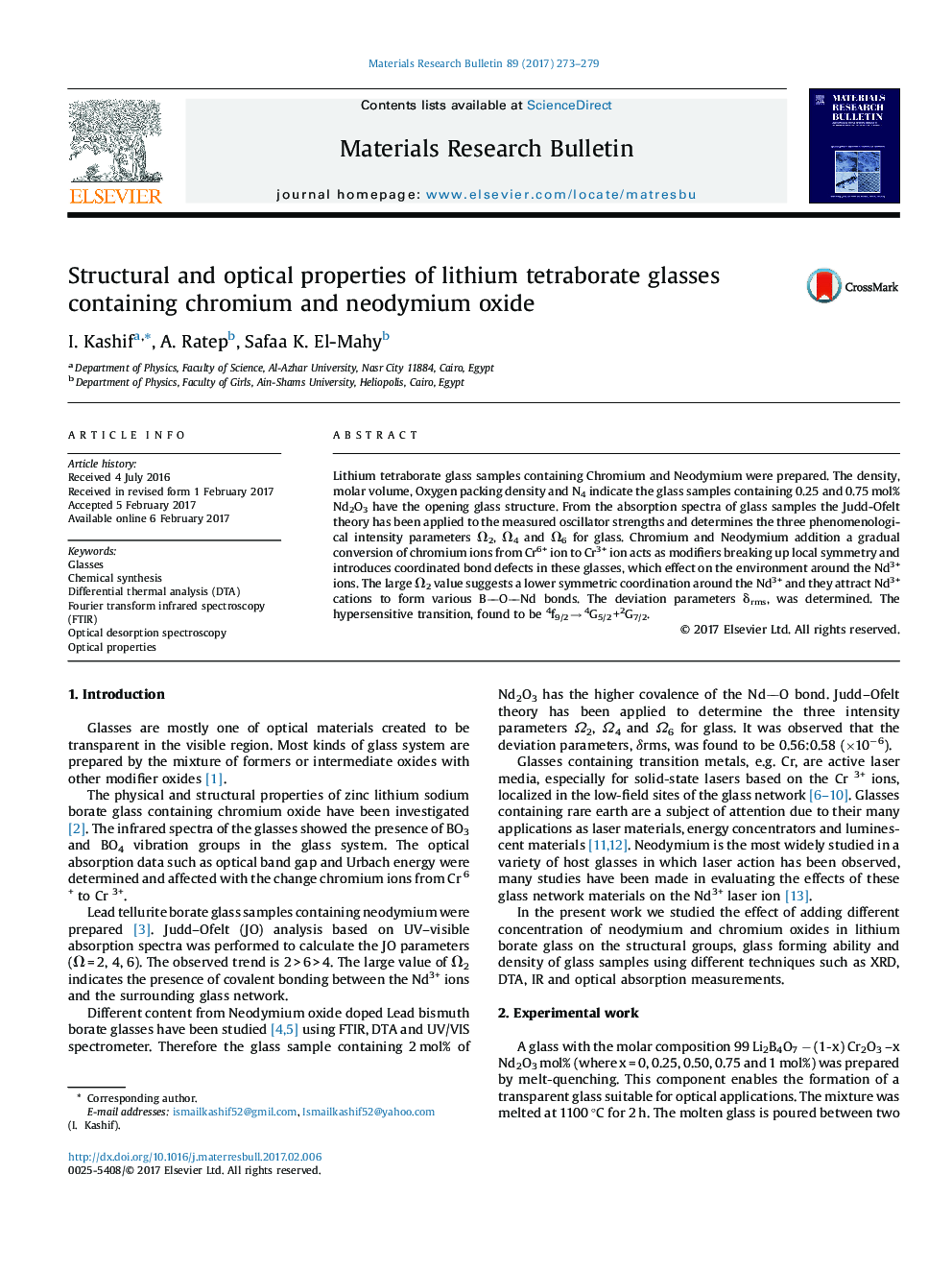| Article ID | Journal | Published Year | Pages | File Type |
|---|---|---|---|---|
| 5442266 | Materials Research Bulletin | 2017 | 7 Pages |
â¢We prepare Lithium tetraborate glass samples by the quenched method as bulk.â¢The effects of addition Nd and Cr oxide on the optical properties of Lithium tetraborate glass are studied.â¢The glass samples containing 0.25 and 0.75 mol% Nd2O3 have the opening structure.â¢The hypersensitive transition, 4f9/2 â 4G5/2 + 2G7/2, is closely related to Ω2 parameter.â¢The Ω2 > Ω6 > Ω4 for all glass sample except sample containing 0.5 mol% of Nd.
Lithium tetraborate glass samples containing Chromium and Neodymium were prepared. The density, molar volume, Oxygen packing density and N4 indicate the glass samples containing 0.25 and 0.75 mol% Nd2O3 have the opening glass structure. From the absorption spectra of glass samples the Judd-Ofelt theory has been applied to the measured oscillator strengths and determines the three phenomenological intensity parameters Ω2, Ω4 and Ω6 for glass. Chromium and Neodymium addition a gradual conversion of chromium ions from Cr6+ ion to Cr3+ ion acts as modifiers breaking up local symmetry and introduces coordinated bond defects in these glasses, which effect on the environment around the Nd3+ ions. The large Ω2 value suggests a lower symmetric coordination around the Nd3+ and they attract Nd3+ cations to form various BONd bonds. The deviation parameters δrms, was determined. The hypersensitive transition, found to be 4f9/2 â 4G5/2 +2G7/2.
Graphical abstractDownload high-res image (114KB)Download full-size image
